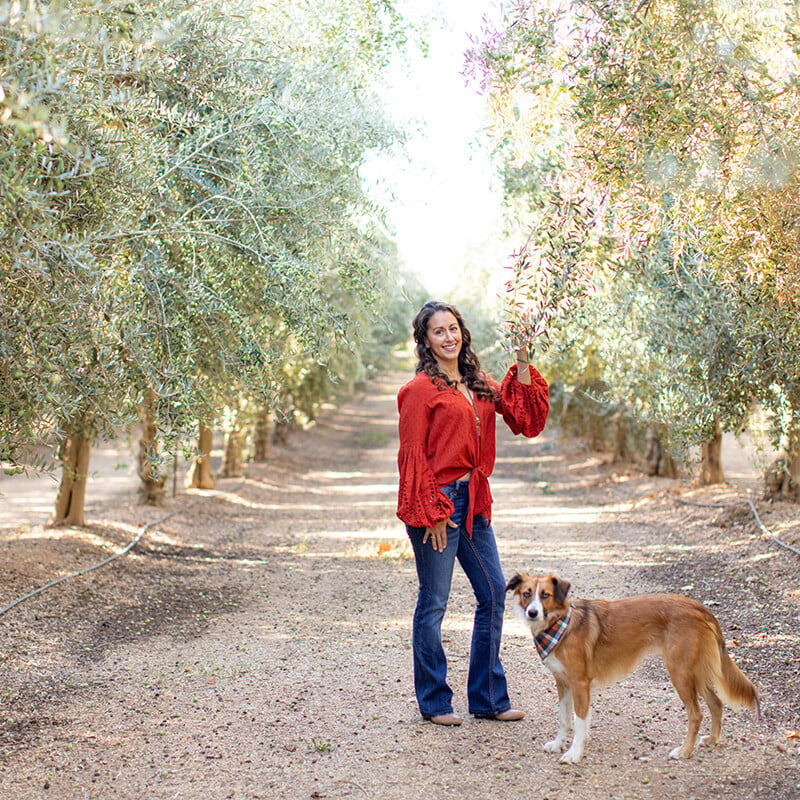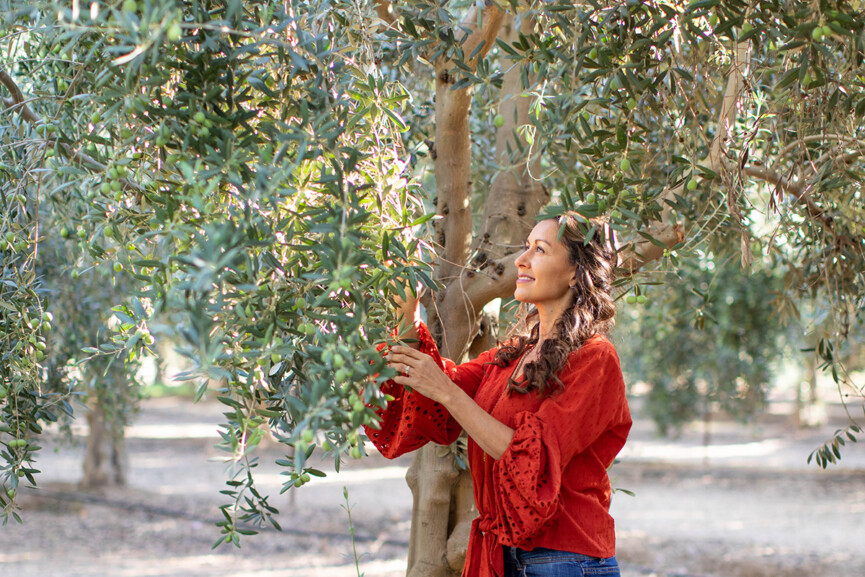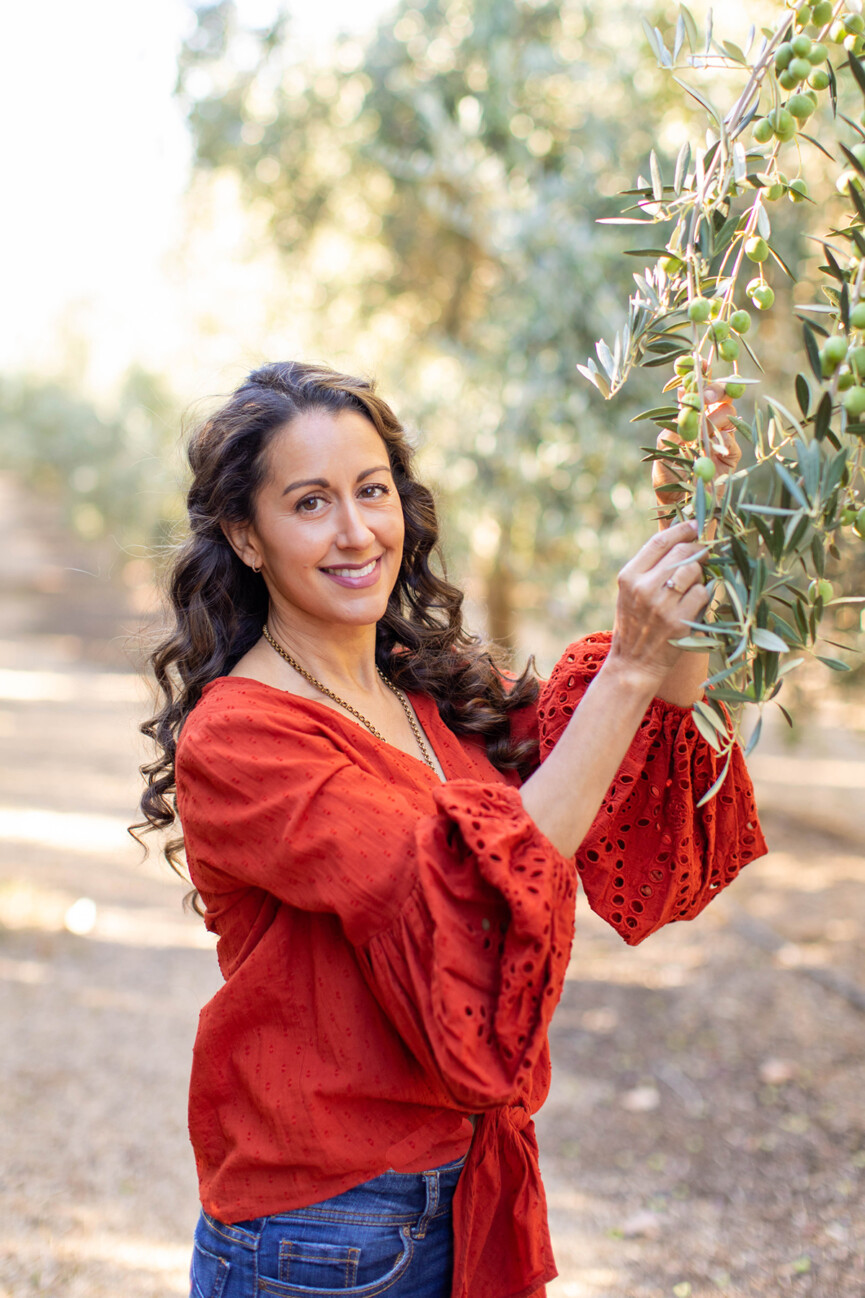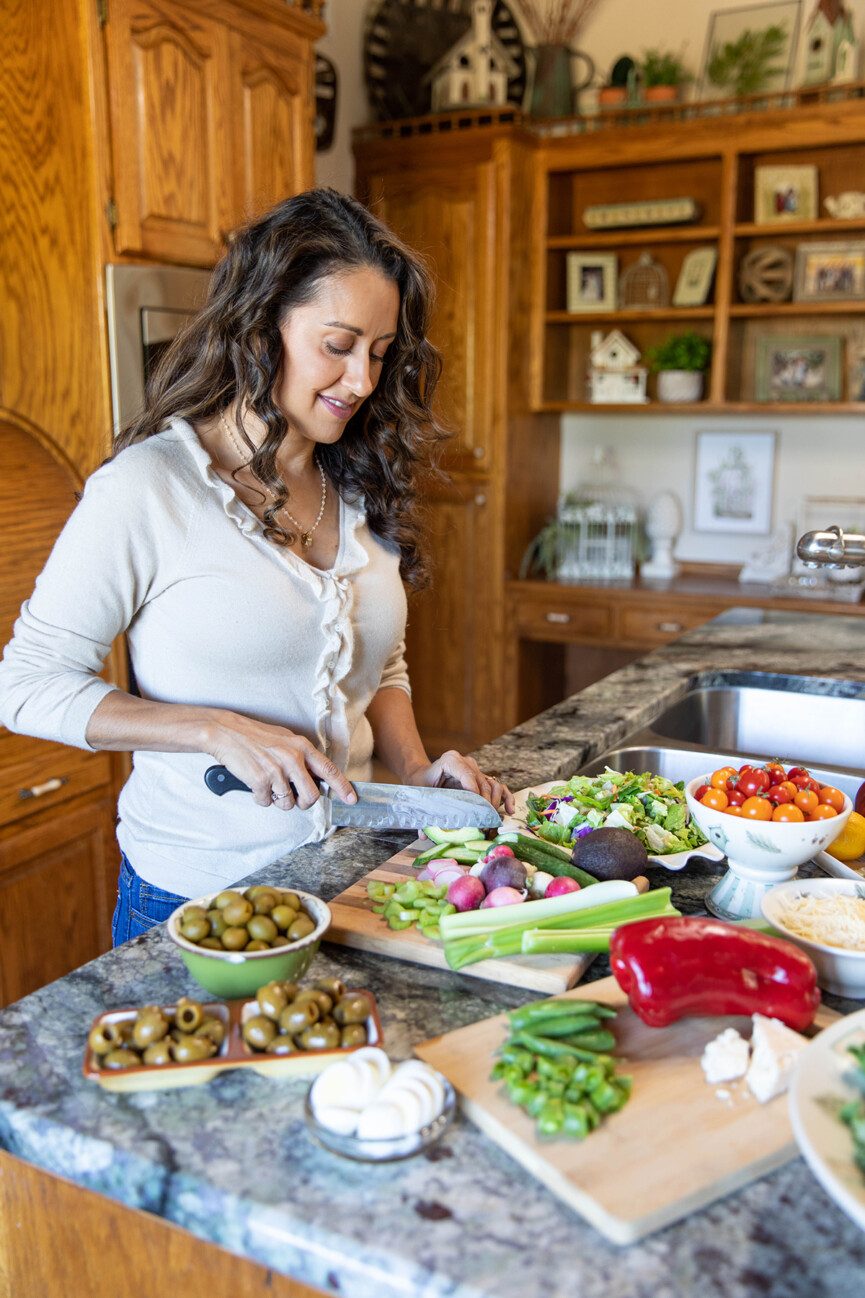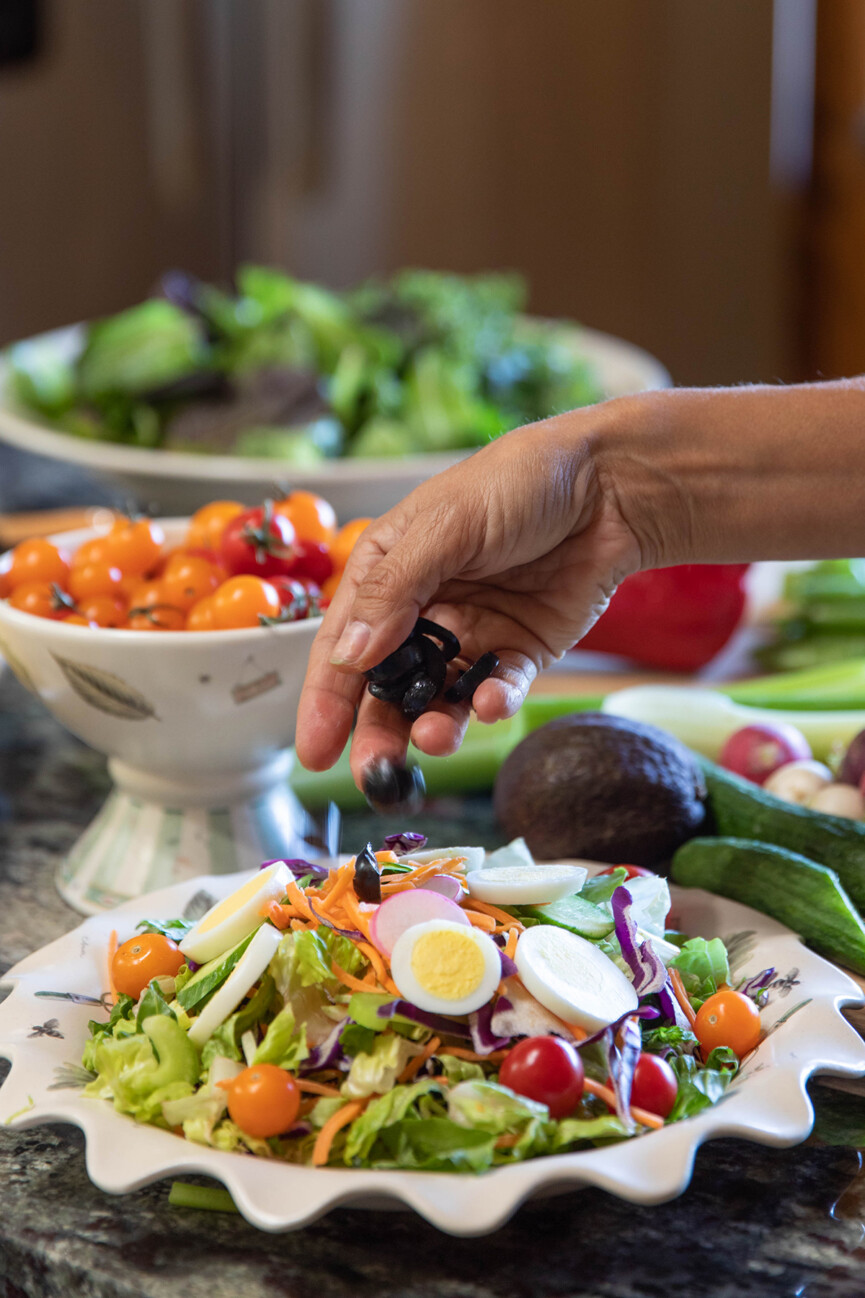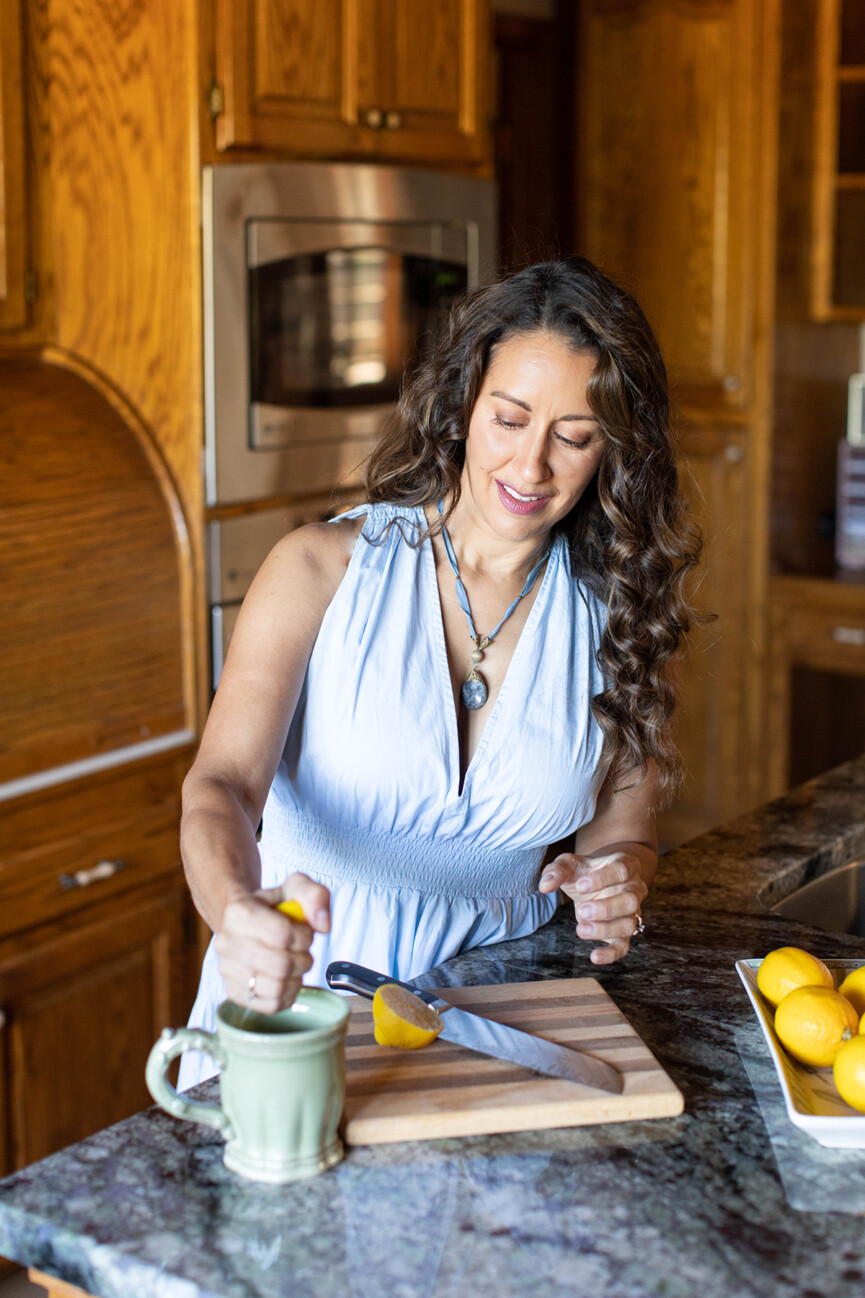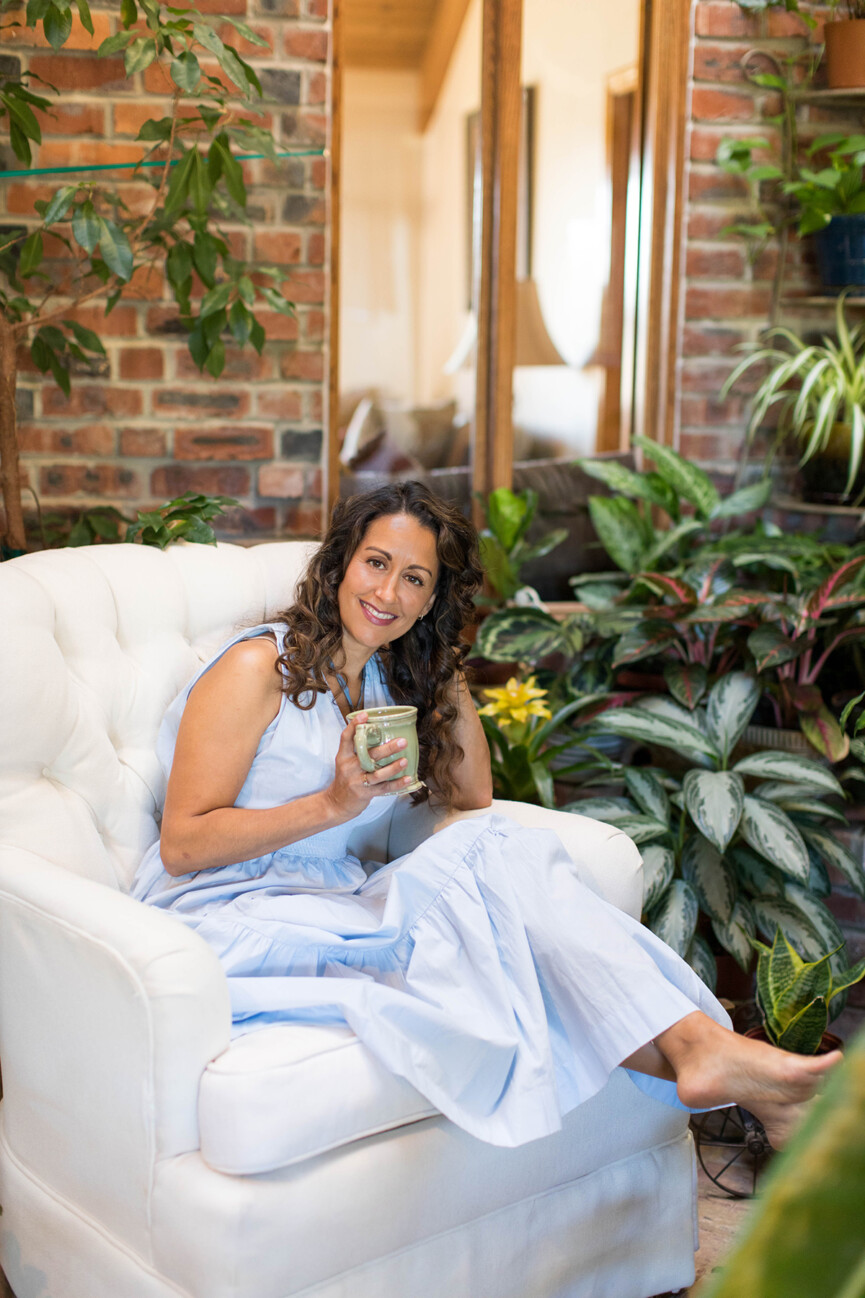Have you ever wondered how other people work? Same. Come along as we go behind the curtain to peek inside A Day in the Life of people we admire. Discover the rituals, weeknight recipes, and productivity hacks that streamline and simplify their busy lives to set them up for success—so you can too! Next up, Carolina Burreson, Managing Director of Burreson Farms and growers for California Ripe Olives.
It’s a common question that plagues so many of us growing up and we can spend years seeking the answer to “what do you want to be when you grow up?” but what if you never find your quote-unquote passion or “one true calling”? Well, maybe you’re what Elizabeth Gilbert refers to as a hummingbird. In a speech the author of Eat, Pray, Love revealed that hummingbirds “move from tree to tree, from flower to flower, to field to field… Trying this, trying that.” The main takeaway? “Don’t chase your passion and maybe you’ll find it.” That’s definitely how Caroline Burreson found herself growing California Ripe Olives at Burreson Farms with her husband (a second-generation farmer) over 35 years ago. “My passion found me, and I just needed to stay tuned in to cultivate it,” she reflects.
And her passion for agriculture continues to grow alongside the trees they harvest at their 155-acre olive grove. So, what is it about farming that continues to excite her?
“Through the years I have developed an appreciation for seeing a crop go from planting to harvest,” she recalls. “I believe my passion for farming grew because of the challenges we’ve faced. Farming can seem like a romantic idea, but it’s deeper than that. It’s the test of our capacities, the lessons that come from failing, and the pride that comes from yielding a great crop. Through all of this I have gained a joy for farming.”
Today Burreson has immersed herself in the profession managing four family businesses across the olive, almond, and walnut trade, while advocating for the industry in several non-profit agricultural organizations including the North Valley California Women for Agriculture, Honeybee Discovery Center, and the California Olive Committee. “For me, advocating for agriculture goes hand in hand with caring about what we do,” she informs me. “Part of recognizing the importance of the agricultural industry comes with the understanding that the information needs to be shared. Being involved with food production gives me a unique opportunity to share personally about the things that are threatening our food production, such as labor shortage, water issues, and changes in climate to name a few.”
Burreson believes that by raising awareness on these topics, people will have a better understanding of how their food is grown, and what they can do to help sustain a future for our food supply. “By advocating for farmers, family farms like mine can continue to do the job to meet increasing demand,” she says. And supporting local growers is as simple as purchasing California-grown ripe table olives from your nearby grocery store. Just be sure to look out for the California Grown license plate logo so you know its home grown.
Keep reading to learn more about Burreson’s inspiring career, what a day in the life of a farmer is actually like, some fun facts about olives you probably didn’t know, plus so much more!
Can you tell us about the difference between California Ripe Olives and imported varieties? Why is it important to buy locally grown California olives?
We grow two varietals of table olives—Manzanillo and Sevillano. California Ripe Olives have a perfect blend of buttery and nutty flavors, have a unique texture, and are of the highest quality. I can tell the second it hits my tastebuds if it’s a California ripe olive. At my house, they are enjoyed in a variety of dishes but mostly enjoyed straight out of the refrigerator. Serving them chilled really brings out the flavor. Beyond buying quality, when you buy California Ripe Olives you know where your food is coming from. It is coming from family-owned groves just like ours.
What are some fun facts about olives that most people don’t know, but should?
- Olives are a fruit not a vegetable. Olive trees are evergreen and can last about 2,000 years.
- Olives are not edible straight off the tree. They must go through a process of being cured in lye and when oxygen is introduced into the process that is what makes a black ripe olive, our family’s favorite.
- Housewife, Freda Ehmann and her family developed the characteristic curing process after experimenting with 280 gallons of olives in barrels on her back porch.
- California grows two main table olive varieties: Manzanillo and Sevillano. California produces 95% of the domestic table olive product.
- Harvest usually occurs between September and November of every year.
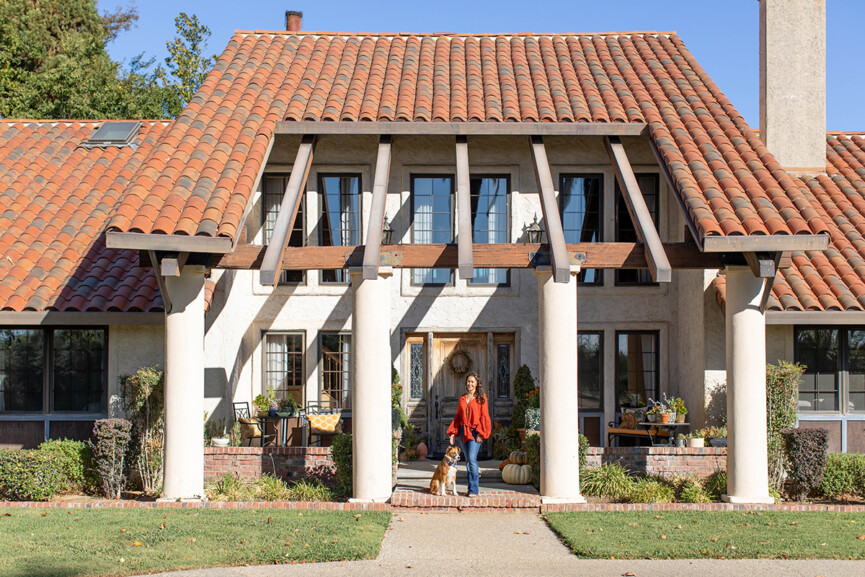
Now, let’s get into your day… What time do you get up? What’s the first thing you do upon waking and why?
I don’t use an alarm clock, but my mornings usually begin about 6:00 am. I find it helpful to immediately get dressed into my workout wear thereby setting my intention for physical activity out into the universe. Every morning my dog Ollie and I walk two miles in our olive orchard. Sometimes I listen to a podcast but mostly I use this time as a walking meditation where I take in the sounds of my steps, and I try to be present. Once we return from our walk, I record at least three things in my grateful journal. My morning routine helps my mindset for the day.
Are you a night owl or a morning person? When do you do your most important work and why?
I don’t usually stay up late unless I am catching up on a project or I have a deadline I’m trying to meet. Morning and early afternoon hours are my most productive time of day which is when I head to the office to manage a variety of administrative duties for all four businesses.
What’s the first thing you do when you get into the office/to your desk? Why?
I check emails. This can be a lengthy task sometimes, so I have tried to limit the activity down to 20 minutes. I have a rule about obtaining an empty inbox twice a day. By tackling my emails first, I can then follow up with my next-steps list.
Can you share a brief play-by-play of your day? Starting from when you wake up until when you go to sleep.
6 am: I wake up and drink a glass of water or have a cup of hot lemon water. My grandmother swears by the hot lemon water in the morning for good health. I will usually throw a load of laundry in too, so I don’t get too far behind.
7 am: Back from my two-mile walk with the dog, I water and tend to my outdoor plants. I try to alternate between yoga and Pilates and dedicate 20-30 minutes to movement and strengthening.
8 am-12 pm: I am headed to the office to tend to the administrative duties for all four of the family businesses.
12-1 pm: I am ready to run back home (only a half a mile away) and finish up some tidying and play ball with Ollie. I am intermittent fasting, so lunch is my first meal of the day. I try to eat as healthy as I can since what I eat for lunch is my first nourishment. My go to lunch is a chopped salad with a protein. It helps to do the prep over the weekend, so I have my salads ready to go. I also use this time to check in with my family and friends via text or phone call. I love to send inspiring quotes or a little note to let them know I’m thinking of them.
2-4 pm: I take care of errands, sometimes I will have a meeting scheduled for either of the businesses or for the non-profit boards I serve on. If there are no meetings that day, I will catch up on any next steps for the projects I have going that week.
6-7 pm: I look forward to the time my hubby gets home and we hop in the truck or the side by side with the dog to check on the orchards. Sometimes we’re checking on irrigation or stop to walk through the orchards to check on the trees. After dinner we usually watch TV together or sit by the pool and catch up. If we’re lucky enough to get away to the coast for a night, we really enjoy Fort Bragg. My husband got his pilot’s license last year and it is only a quick 40-minute flight to the beach now. It sure beats a four and a half hour drive! We can enjoy dinner by the coast and be back the next morning.
9-10 pm: I am a firm believer that we perform better on enough sleep, so I usually hit the sack early. If I don’t get at least eight hours of sleep, I am feeling it by mid-afternoon the next day.
Being a founder means you are wearing so many hats and are across so many facets of the business. How do you manage your time effectively?
Some of the time management rules I give myself are: I only check emails three times and I’m on social media two times a day in the morning for 10 minutes and late at night before bed for about 10 minutes, otherwise it’s easy to get sucked in for hours. I have made that mistake before!
I work in 45-minute time brackets on several different projects. Breaking up my workday like this allows for me to stay focused and know that I am making time for other tasks. However, if I can take care of something in less than two minutes then I do it right away instead of adding it to my to do list. It has taken me years to learn that even though I kick butt at multitasking, it’s not the best way for me to be productive. This is usually hard for women—we tend to feel we can handle it all and all at once.
I keep an “enough” checklist on my phone and I only choose three items for the day from my long to-do list. By doing this I can feel productive and “enough” by checking off three realistic goals for the day instead of trying to tackle a never-ending list of to-dos.

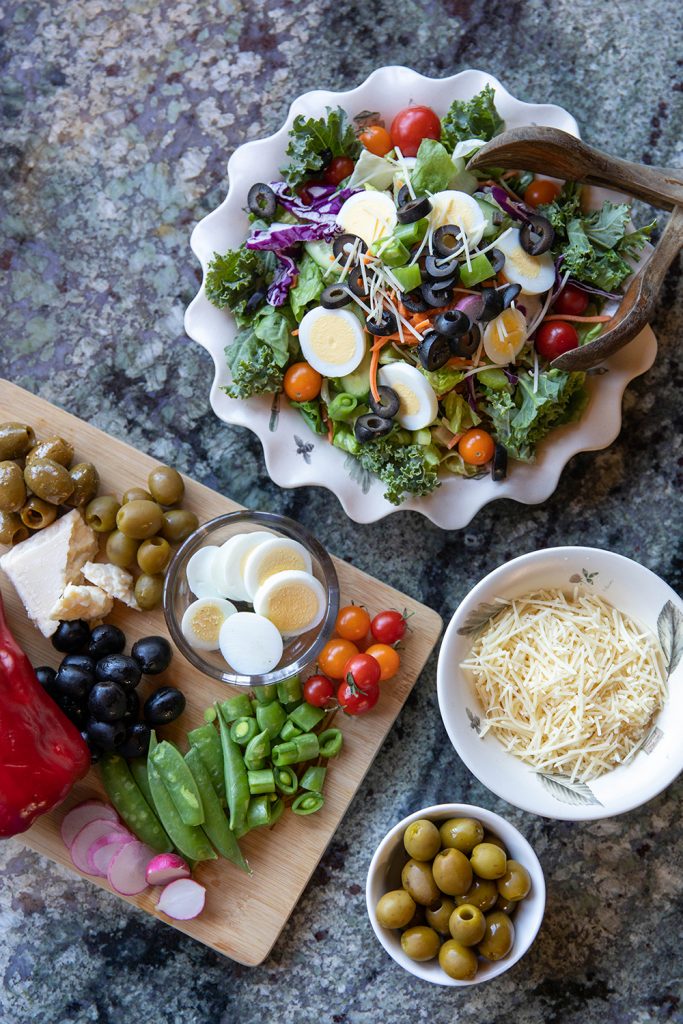
Do you ever reach inbox zero?
Yes. I maintain an empty inbox by having folders that I use for next steps needed or follow ups. I add anything that requires a follow up or action on my part to my “action emails” folder. I tend to that folder in the morning to see what I need to do before I file the email into its corresponding folder. If I’m in a hurry and I don’t have time to sort my emails, I move the opened emails into my “to sort” folder which I tend to later. This system is something I learned from a program on LearnDoBecome.com. I’ve been using this system for years and it helps me to not feel bogged down by so many emails.
How do you handle the constant influx of inquiries and duties that come with managing a business? What are some work habits that help you stay healthy, productive, and on track to reach your goals?
Balancing the businesses, family, school, and my volunteer work can be challenging to say the least. At work, I tend to apply a 45-minute work session on a task and then I take a quick break—I’ll stretch or step out to take a quick walk in the orchard. The quick breaks help me to not be so sedentary and sometimes provide an opportunity to brainstorm on what I’m working on.
It took me a long time to learn to also put myself on my list. Life can be super demanding, but we can’t give from an empty cup. I know that by making time for myself and learning to sometimes say “no” helps me do better at the things I’m responsible for.
Creating lists also keeps me on task. The STEP program shows you how to optimally use lists to organize the next steps on any project.
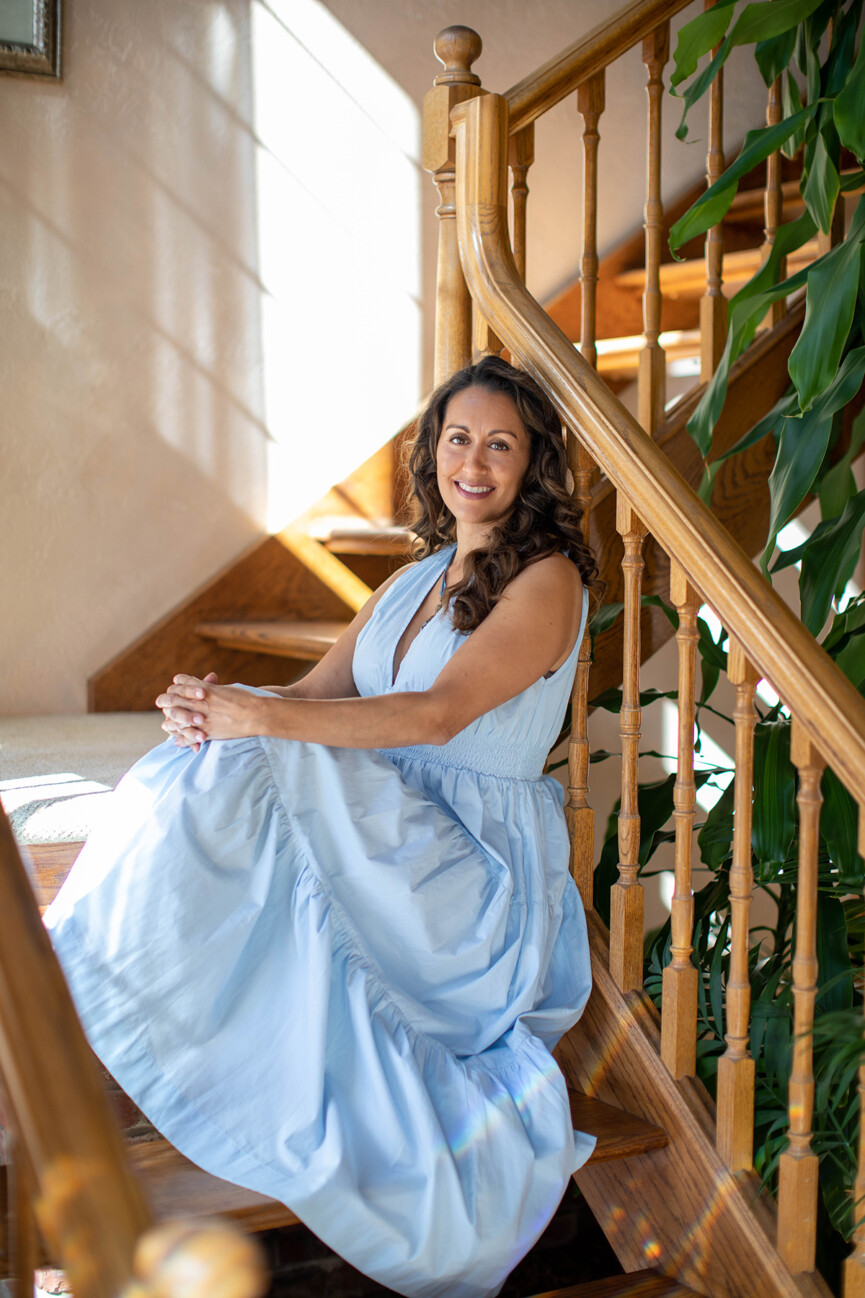
What is your go-to weeknight recipe that streamlines and simplifies your life?
Well, we have a few dishes we like to add olives to, but during the summertime, I like to make California Red Potato and Olive Salad. It has a great light taste and is a nice change-up to the typical potato salad. The leftovers are great for lunch the next day, too.
How do you turn your brain “off” when there are so many things on your mind?
Sometimes I cannot turn my brain off at night, so I have taken to using a sleep timer on my Audible app or I count every four breathes until I fall asleep. It actually works!


What’s the most rewarding part of your day and what’s the most challenging?
In the evening, riding along with my husband and dog while we check on our orchards. We’re both busy and even though we are in communication throughout the day, this is dedicated time together and I am always learning something new from him about farming.
The most challenging part of the day is usually late in the afternoon when I feel the end of the day is in sight and I am scrambling to get more done.
What are some of the biggest lessons you learned along the way?
I have learned that failures should be celebrated more because it means that we’ve tried at something and there is always a takeaway lesson when we fail. I’ve learned that balance can be obtained but takes as much effort as trying to do it all.
I’ve also learned that there are no shortcuts and that the biggest benefit of getting through the grind is the perspective from the other side.
What’s the best piece of advice you’ve been given? And what’s the worst?
To be fully present in the moment. You blink and your kids have grown up. Reminiscing about the past or worrying about the future can rob you of the very thing you’re trying to enjoy.
Some advice that was given to me that I did not find to be true is to follow your passion. For years I did not know what I wanted to be passionate about. I believe the better advice is to develop your passion. My passion found me, and I just needed to stay tuned in to cultivate it.
What advice do you have for women who want to get involved in the agricultural industry?
There are many ways to be involved with agriculture. Learning about how your food is grown and becoming a better-informed consumer is a great way to advocate for farmers. We’ll always need agriculture and there are a vast number of career opportunities in the agricultural industry and food-sector. A great place to start is to get involved with agricultural organizations or to visit an agritourism area which can be fun and educational. Staying informed about agricultural issues and fact-based sources such as through your local Farm Bureau offices, and Department of Ag Extension programs is a start. Finding a local chapter with the organization, California Women for Agriculture, is another great way to get involved with likeminded women who care about agriculture.
What are some exciting projects you’re working on this week/month?
Currently, I’m working on a project to help develop a new facility for the Honeybee Discovery Center here in Orland. With the new state-of-the-art center, through exhibitions and educational programs, we can advance the public’s understanding of honeybees and promote a culture of bee awareness. Every third bite of the food we eat is made possible because of a honeybee, so there is every reason to learn how we can help save the bees.
What are you most excited for in 2021 and beyond?
The pandemic has been difficult for so many individuals and businesses. I’m looking forward to connecting more with people in person again. I am Zoomed out. Also, I am excited to travel again without limitations. I have so many places on my bucket list.
What’s something not a lot of people know about you?
My other passions in life are working with children, making deep connections with people, and learning more about the importance of mental health.
I am a bit of a germaphobe and strive for clean spaces, but I can be very messy.
I have recently gone back to college. I’ve discovered that I truly enjoy the learning process and am always inspired to learn something new. Knowledge is so accessible and you can find it anywhere.

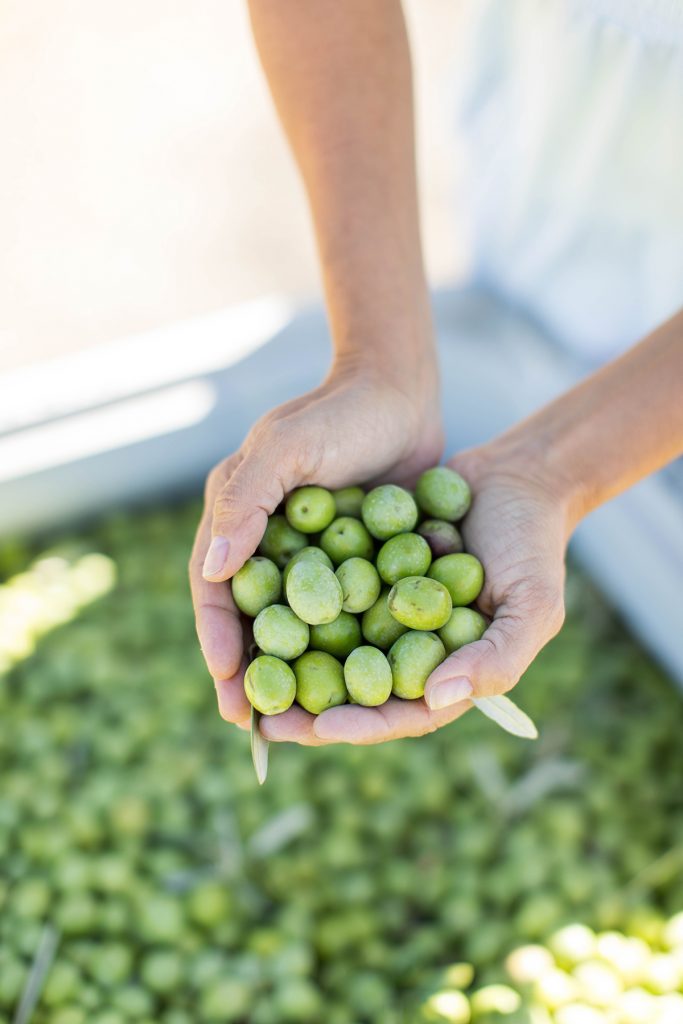
What are you reading/watching right now?
I just finished Where the Crawdads Sing by Delia Owens on Audible. Currently, I am listening to A Radical Awakening by Shefali Tsabary. I love historical fiction, so I just started watching Downton Abbey but my favorite feel-good show is Call the Midwife… happy tears every time.
The podcast that changed the way you view the world is….
A podcast that I listen to every morning is The Newsworthy. It’s a great way to stay informed of news updates from a reliable source and it only takes about 10 minutes to listen to. I usually listen to it while I’m getting ready for the day.
The book that changed the way you work is…
Getting Things Done by David Allen gives great advice on tackling the many to dos in our lives. It helps you identify and manage the things that pull at your attention. The best take away from the book are the “Five Steps of Mastering Workflow: Capture, Clarify, Organize, Reflect, and Engage.” The rule I learned (and use daily) is the rule that if a task takes you less than two minutes then it should be done at the moment. Longer than that, then you should delegate or defer the task.
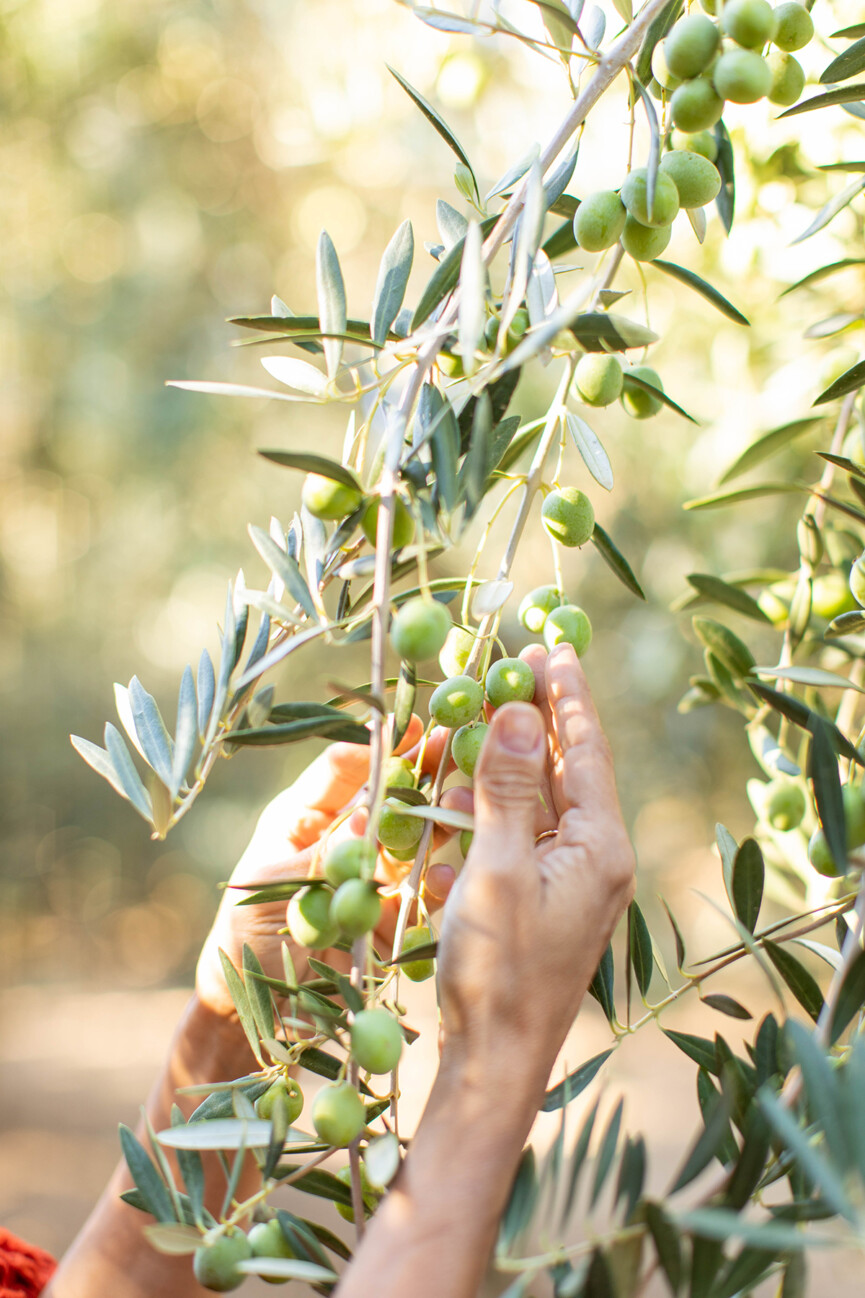
What is your message to consumers? How can they help advocate for better practices but also buy local and be aware of how their food is grown and processed?
I think it’s important for consumers to know and care about what they eat. Education is an important component to the livelihood of farming. Consumers want to understand where their food comes from and how it’s grown.
When we educate consumers with reliable information about their food, they can make meaningful decisions. Consumers play a key role in advocating for sustainable agriculture not only by buying locally grown food but by supporting education and research in agriculture.
“Eating is an agricultural act” so we all have a responsibility to advocate for farming without compromising the land we grow our food on.


